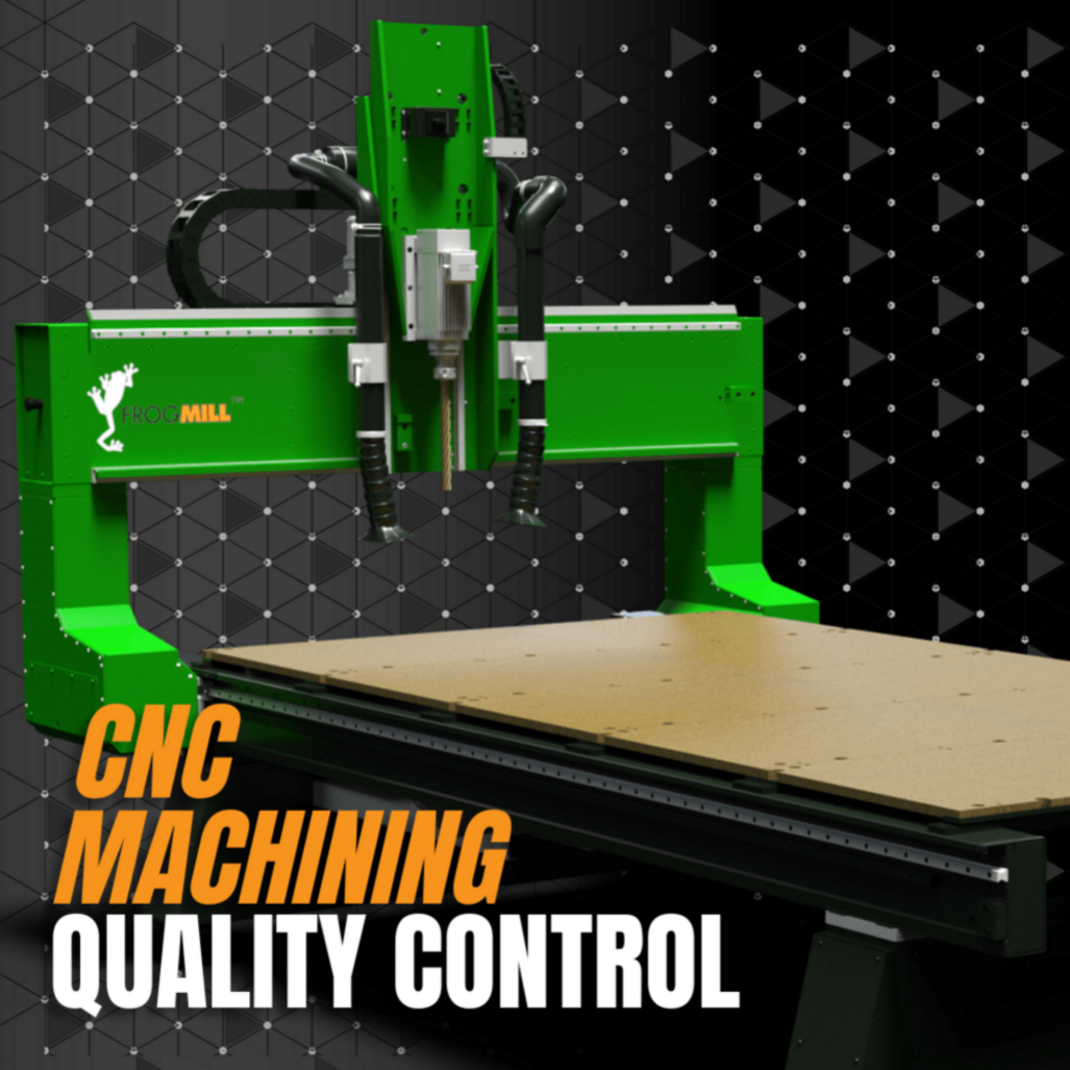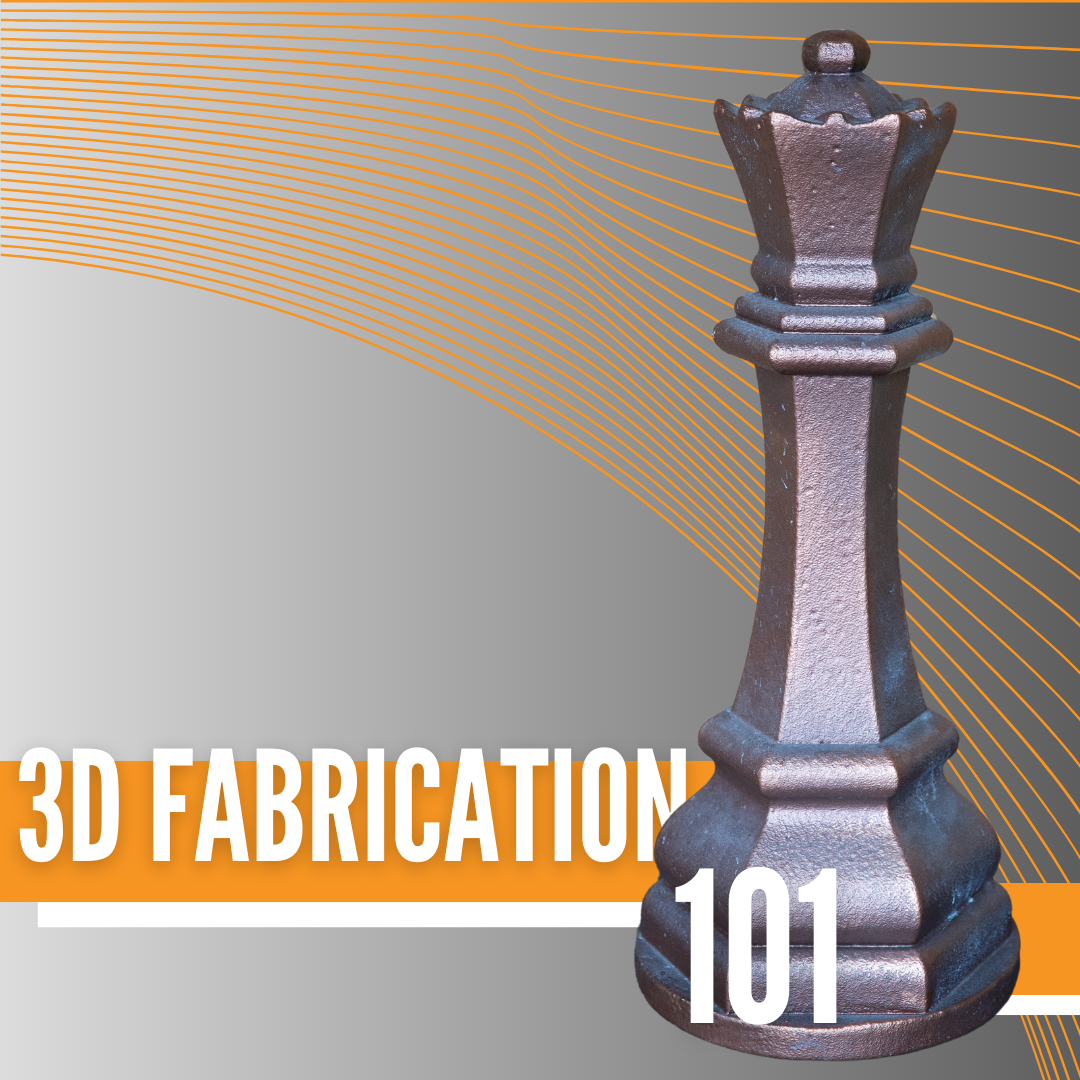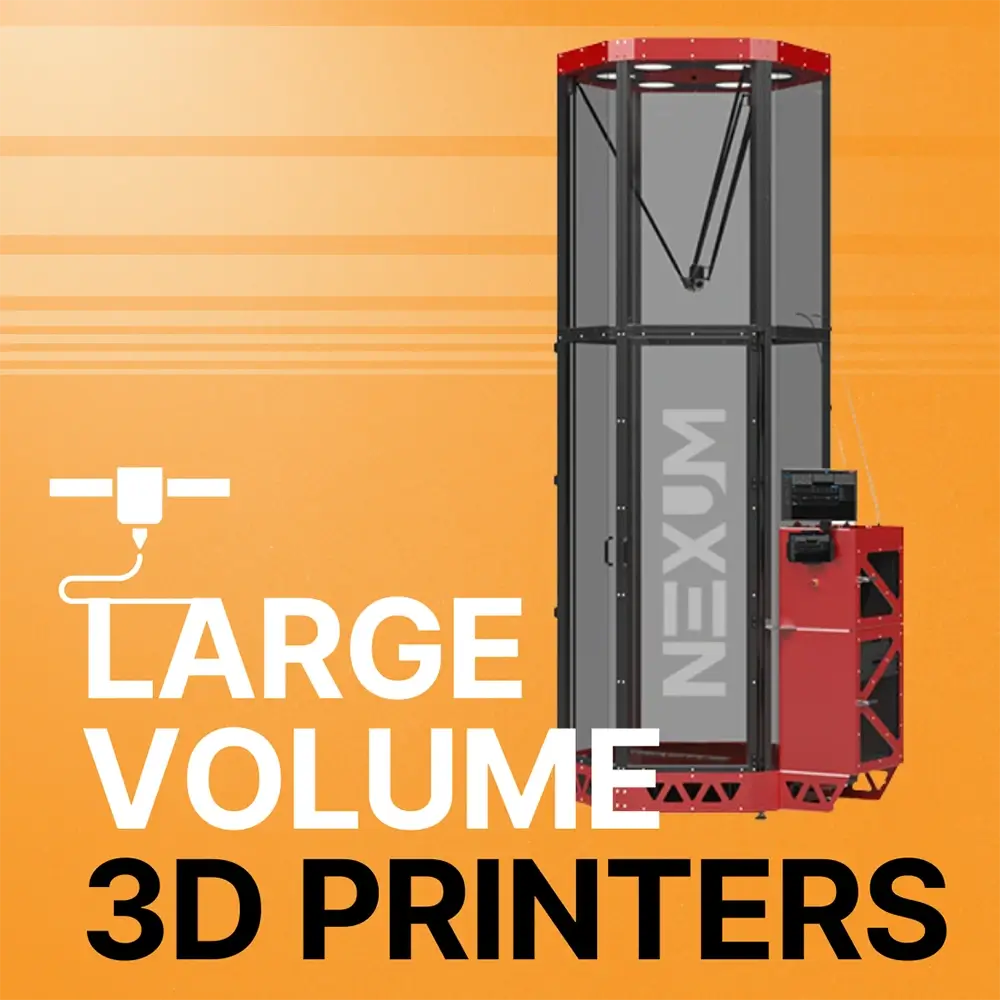Table of Contents
The construction industry is ever-changing and fast-paced, requiring a high level of precision and attention to detail. Human errors can lead to costly mistakes, delays in project advancement, and even injuries. Integrating automated processes for construction-related products and tasks can help businesses reduce errors and increase efficiency by automating time-consuming tasks, and these processes grant higher production rates, increased productivity, less wastage of materials, improved product quality, and improved worker safety. The construction industry has been a traditional industry often associated with labour-intensive practices for many years. The introduction of advanced technologies, however, is transforming how age-old processes are being completed, where CNC (Computer Numerical Control) machines have emerged as a game-changer in the field of construction.
The scope of automation in construction is extensive as it involves all the stages of product development from initial planning and design to engineering and manufacturing of designs. This has revolutionized the way buildings and architectural elements are designed and constructed. CNC foam models can be used to streamline production processes by serving as templates for fabricating components used in the construction industry. Whether it is creating custom molds for architectural elements, formwork for concrete pouring, or templates for cutting building materials, the use of CNC foam models enables precise and streamlined manufacturing. With the construction industry buzzing in spring, keep your business ahead of the game with the assistance of automation that FROG3D® System components can offer. Read below to discover how using CNC foam models expedites construction timelines and helps you prepare to meet deadlines successfully during peak season.
Applications Of CNC Machines In Construction
CNC machines have become an indispensable resource for the construction industry due to their precision, speed, and flexibility, and the following are some of the most common applications of CNC machines in the construction industry:
Prefabrication: CNC machines are increasingly used in prefabrication to cut, drill, and shape materials with high accuracy and precision, which results in accurate and consistently fabricated components that can be easily assembled on-site.
Concrete Formwork: CNC machines make it possible to create complex and curved forms that would otherwise be challenging to achieve using traditional methods.
Architectural Features: CNC machines are used to fabricate intricate and decorative architectural features such as moldings, facades, and columns. CNC machines can be programmed to produce complex shapes and patterns This gives architects and designers the freedom to express their creativity, where the sky is the limit!
3D Printing: 3D printing is gaining popularity in the construction industry, and it allows greater design flexibility to construct unique and innovative structures that would be impossible to create with traditional construction methods.
Benefits Of Using CNC Machines In The Construction Industry
More recently, the construction industry has integrated CNC machines into various aspects of architectural and building processes. Equipped with cutting-edge software and hardware capabilities, CNC machines make it possible for architects, engineers, and contractors to streamline workflows, maximize resource utilization, and achieve exceptional levels of accuracy in fabricating components and their assembly. From cutting and shaping building materials into detailed designs and offering customization options, CNC machines have become essential tools that offer a plethora of benefits in the construction sector.
Precision And Accuracy
CNC machines produce exceptionally accurate and precise cuts, shapes, and drill holes. This precision ensures that the fabricated parts and components are consistently high-quality, which is crucial for constructing durable buildings. Precise cutting offers the ability to create intricate and complex components with tight tolerances and this precision is paramount for ensuring the proper fit and alignment of building elements. The high precision and accuracy of CNC machining also decreases the need for manual rework which saves resources such as time and money.
Speed And Efficiency
CNC machines can produce a large quantity of components quickly, as the speed of these machines decreases the time that it takes to construct building parts which allows construction projects to be completed faster. This efficiency of CNC machines also decreases the cost of construction, since fewer labour hours are required. With CNC machines operating continuously and autonomously once they are programmed, they lead to enhanced efficiency in construction processes. This is possible because they can work faster than manual labour, and can perform multiple machining tasks simultaneously.
Customization And Flexibility
CNC machines are versatile and can work with a wide variety of construction materials including wood, acrylics, plastic, foam, and composite materials. This feature enables the fabrication of varying building components from structural elements to decorative finishes. CNC machines can be programmed to fabricate a wide range of components with different shapes, sizes, and finishes which allows customization and flexibility in construction projects. Custom-designed components can be produced quickly and easily, and allows architects and engineers to develop lucrative designs that were previously deemed impossible with traditional fabrication methods.
FROG3D® has end-to-end solutions for your projects, whatever they may be! Custom work is expensive for a good reason, but the staff at Streamline Automation can help you get ready to offer custom work confidently and deliver outstanding products every time.
Get Construction-Ready With Foam Models Crafted With FROG3D®
When it comes to creating architectural moldings and other construction-related features, foam has become the material of choice. It is lightweight, easy to install, and durable, and coated foam provides benefits that traditional materials do not. The lightweight feature of foam makes it easy to transport, handle, and manipulate during the design process, and architects and designers can move foam models around a workspace easily or present them to clients without needing heavy-lifting equipment.
CNC foam models have become increasingly popular in the construction industry for their versatility. They are utilized to add unique aesthetic touches to construction projects, and create formwork for casting concrete elements such as columns, beams, and facades. They serve as cost-effective alternatives to traditional tooling methods for producing unique shapes and patterns. This is because foam is a relatively inexpensive material compared to other modeling materials such as wood, and this affordability allows foam models to be an accessible tool for architects and designers alike. Foam also produces minimal waste during the fabrication process, which further reduces costs.
FROG3D® is an end-to-end foam cutting and carving solution that brings creativity, detail, and productivity to the creation of architectural details, foam moldings, architectural features, and so much more!
Building Finials And Corinthian Capitals
A highly efficient method to generate your master is by implementing the FROG3D® system, and you can pull your own rubber molds to recreate multiples. Maintaining a 3D cutting file takes up zero physical space, so you can stow away your master molds and recreate them if required in the future, thus making it possible to replace any collection of storage shelves and containers with a simple yet efficient USB stick.
After cutting the details for your finials or Corinthian capitals, use the FROGSkin™ by Graco to apply a protective coating that can be painted to resemble stone, marble, or whatever look you are trying to recreate for the columns. This is an effective alternative to heavy and cumbersome concrete details. The FROGSkin™ by Graco is an electric spray system for applying polyurea and other protective coatings to the foam designs, and is the perfect solution for durable, smooth, or textured finishes for your architectural, sculptural, or themed pieces. The coating provides a durable finish that can withstand exposure to moisture, UV radiation, and other environmental conditions. In conjunction with Streamline Automation’s FROGCoat™ line of coatings, FROGSkin™ by Graco is the ultimate coating solution and has been built with an industrial environment in mind with protection against breakage and blockage.
The FROGScan™ Flash – Peel 3 can be used to gather the existing surface geometry of an architectural detail that needs to be repaired or recreated. It is possible to translate any physical object into an accurate 3D digital scan that can be perfectly replicated or enlarged with this portable scanning system. The FROGScan™ Flash – Peel 3 utilizes white light technology that captures objects in a matter of seconds and allows for the seamless capture of high-quality geometry and colours simultaneously.
Trim And Molding Details
To add unique aesthetic touches to your construction projects, using foam as the base material and stucco as the protective coating provides a lightweight product that is simple to manufacture. The FROGWire™ can cut 8’ lengths of molding details including a cleat, which makes them easy to manufacture and install. The FROGWire™ boasts industrial strength construction along with top-of-the-line speed and accuracy and is capable of 2D, 3D, flat cuts, and rotational parts by importing vectors or 3D STL models. Easily create complex tapered parts using the advanced tapered cutting capabilities, and multiple-sided cuts using multiple profile shapes created from a 3D model.
Creating Custom Archways And Openings
Foam is a superior and inexpensive material that can be substituted for lumber-framed archways. Archways and openings can serve as decorative features, functional elements, or structural components. Automated processes can generate the correct curvature of the openings, which makes the setup very simple on-site. It is also an excellent way to fill in for the skilled carpenters that used to be readily available but are now difficult to source.
Insulation Panels
The FROGWire™ can efficiently and quickly cut custom-sized insulation panels for your construction projects. Streamline Automation has clients using the FROGWire™ to make their sloped panels for flat-roof drainage systems, as well as pre-fab insulated wall panels complete with electrical chases. After the foam panels are machined, any necessary finishing touches can be applied which may include smoothing any rough edges, sanding surfaces, or applying coatings to enhance durability and weather resistance.
City Planning And Infrastructure
EPS foam can be used to fill the voids for storm drains and gutters before pouring, avoiding many hours of hands-on formwork. Streamline Automation’s FROGBase ™ software in conjunction with our FROG3D® System can also generate and create the surface geometry for storm drain systems, including inlet elevation variations and changing pipe diameters. It is a one-of-a-kind 3D application that enables automated design and CNC toolpath generation of pre-bench molds for precast concrete drainage products including pipes, manholes, and catch basins. It stores and loads pipe sizes, tool specifications, and base geometry for quick and reliable 3D model and toolpath generation. The traditional processes used to create pre-bench molds are typically cumbersome and inflexible, and FROG3D® software can help you accelerate production, advance repeatability, and integrate state-of-the-art automated production capabilities.
Form Liners
Form-liners in CNC machining are used in the production of molds or templates used for creating decorative or textured surfaces on materials and can be made of durable and inexpensive materials such as foam. Foam can be CNC machined to create intricate patterns or designs, and it is possible to create custom form-liners or stamps to add eye-catching details to your work. The FROGMill™ can achieve high-detail reliefs that will make your work stand out in a crowd! From huge retaining walls to personalized sill plates, the FROG3D® System can give you the flexibility to be as creative as you dare.
Conclusion
From custom curves to cubes and corbels, Streamline Automation has got you covered with CNC! Free-form architectural details usually require a lot of stick framing and hands-on experience. A great benefit of utilizing automation is the fact that these processes can blend into the digital world, and your employment pools can grow substantially. It is possible to hire a 3D modeler from across the globe to generate the surface geometry required for your project and create it locally using the FROG3D® System. Whether it is a negative or positive mold, we have the necessary tools, software, training, and expertise to push your business to the next level. Call us yesterday!




